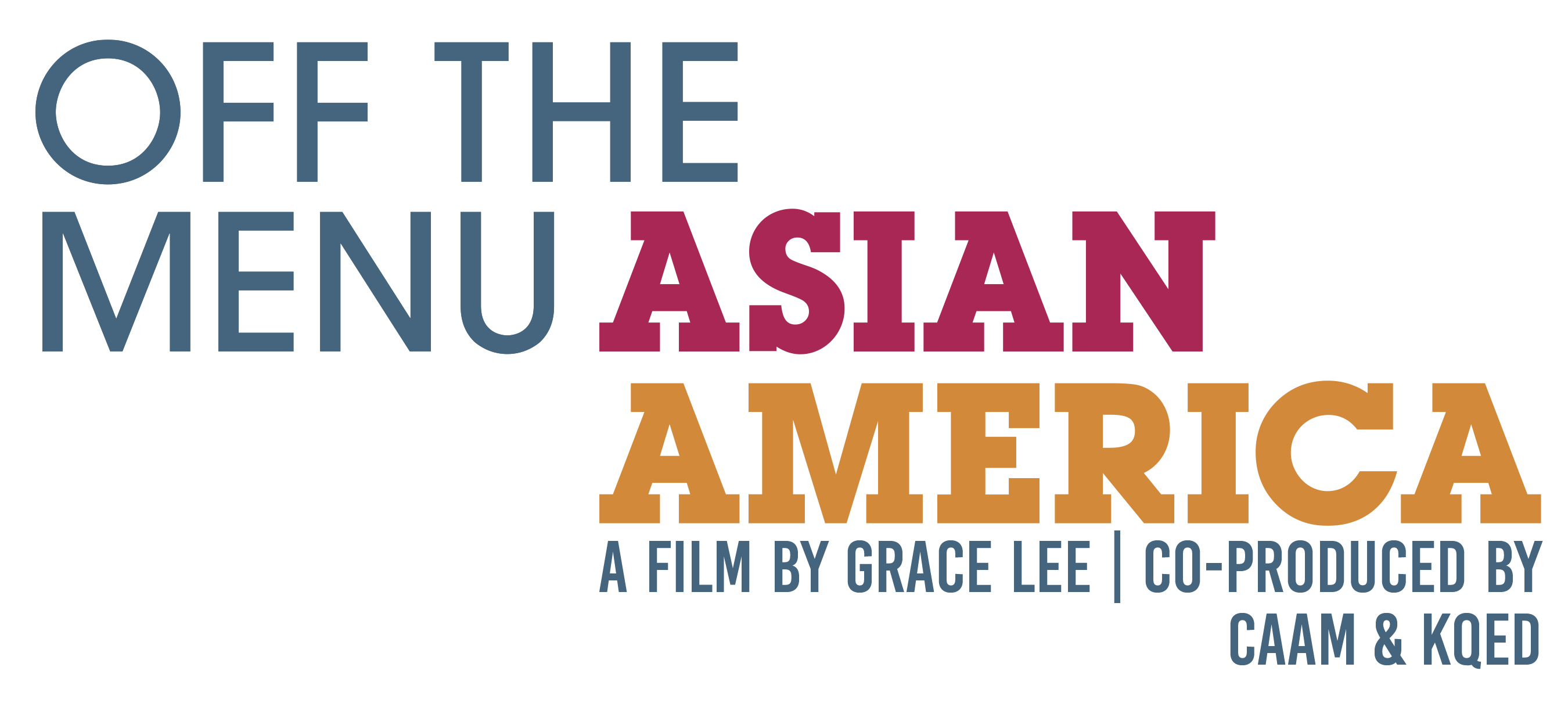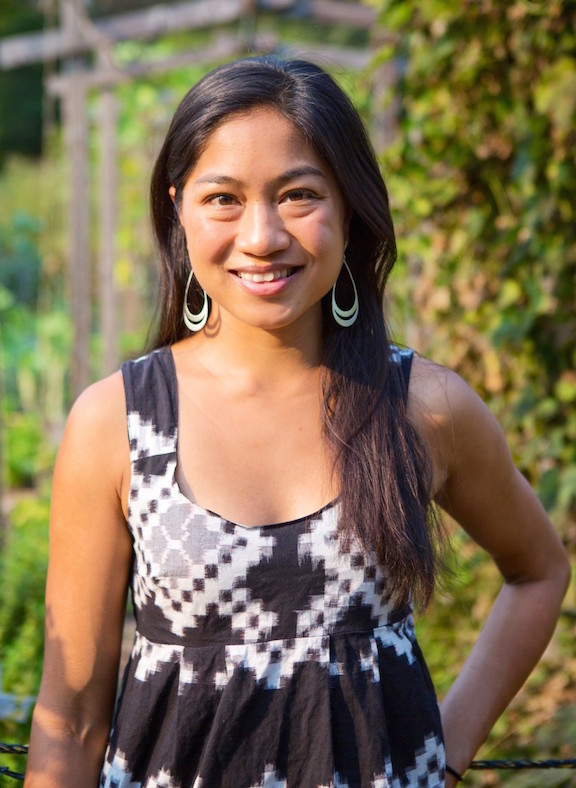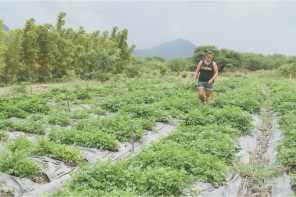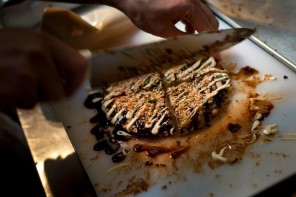Aileen Suzara, 31, is a Bay Area-based natural chef who focuses on sustainable foods and who works to encourage healthier eating by teaching garden and farm-based workshops, developing sustainability educational programs, and hosting community pop-up dinners. Her blog, Kitchen Kwento (Tagalog for stories), documents and shares stories on the relationship between food, people, and the land. Aileen is a first generation Filipino American who grew up in California and Hawai’i. She is an alumnus of UC Santa Cruz’s Farm and Garden Agroecology Apprenticeship program, and recently received her Master’s in Public Health Nutrition from UC Berkeley. Along with writing for publications such as Hyphen and Earth Island Journal, her stories can be found here: http://www.kitchenkwento.com
—Lisa and Irene Yadao
Q: Where did you grow up and how did Filipino food fit into your childhood and adulthood? How about your culinary career — have you always cooked Filipino food?
A: I had a semi-nomadic childhood — born in eastern Washington, then moved on to Texas, Florida, and the Mojave Desert. We ate more canned minestrone soup, Spam and microwave dinners than “authentic” Filipino food in those days. When I was eight, I found the old Filipino cookbook my mom had brought [to the U.S.] in the ’60s that became both a passport and talisman to Filipino food. It was when we moved to Hawai’i that we were at last surrounded by a local culture defined by its relationships to food—a place flavored by many cultures, including Filipino cuisine and agricultural history. These experiences, together with the return trips to the Philippines my parents made, imprinted a deep longing to connect to Filipino food and farming. That longing carried me through adulthood, to training as a “natural chef” and two years apprenticing on organic farms, and onward to community dinners, dishes, demos and culinary lessons I develop today.
Q: When or how did you come to realize there was a market or a need for your dishes?
A: I wanted to cook the things I liked to eat, and was also dismayed by food-related health disparities in my family and community. I wanted to show that our culture isn’t the thing killing us. And in the rise of farm-to-table organic foods, we need to see more people of color reflected—knowing we built agriculture in this country, with dishes and flavors and knowledge that was intrinsically “farm to table” at the root. Knowing most people get scared off when “healthy” is attached to the word “food,” my goal has been to entice people to dishes that embrace health without hitting them over the head. Another goal is to highlight produce from small farmers, particularly farmers of color and those growing Asian heritage crops.
Q: How is your food received by both the Fil-Am community and non-Filipinos?
A: When I led cooking classes at the OACC (Oakland Asian Cultural Center), it was moving to see mostly second and third generation Asian Americans and Filipino Americans who were hungry to connect to the rhythms of the kitchen. The same in working with kids and youth—[they get] to witness how food is more than a meal but can deepen a sense of self and place. I’ve also had positive responses from non-Filipinos who often seem to be drawn to the sustainability aspect. I’ve received some questioning on “authenticity” from those who believe Filipino food must be pork-based and fried, and doubt more plant-based or spicy regionally influenced dishes. Truth is, our palate has shifted to make party foods like lechon or leche flan—once reserved for special occasions—the norm. Dishes with vegetables can be delicious, and are also economical and resourceful. I also primarily use local produce—even if it isn’t “traditional”—as my philosophy is that using what’s fresh is in the spirit of tradition.
Q: What trends are you noticing with Filipino food, whether it’s a dish that’s gaining popularity or chefs trying new twists on old traditions?
A: A trend I see is taking an iconic and rather charismatic ingredient—like ube—and creating a range of foods that spin off of it, from donuts to flans and beyond. I also see more folks featuring kamayan style dinners— a return to eating with the hands. I am excited about this as it transforms the actual practice of eating, and encourages people to eat together. And, it puts us in food kinship with South Asians, Ethiopians, and other cultures who traditionally share meals eaten with the hands.
Q: You mentioned your dismay at food-related health disparities, and that your goal has been to entice people to dishes that embrace health. You’ve also come across the argument that your food is “inauthentic” or different because it is “healthy Filipino food” rather than just traditional Filipino food. Can you expand on that topic of authenticity?
A: Authenticity is a word that comes up often in questions about food. But it’s a slippery term, as culture is constantly changing. At the root, all traditional food cultures are largely “healthy.” And Filipino cuisine, at its roots, reflects a complex relationship with land, sea and seasons. While this is a vastly abridged and simplified history, we are all caught in a story that the public health world identifies as the “nutrition transition”—a rise in chronic disease and a marked shift away from traditional diets and lifestyles. To cook something closer to precolonial, or using what’s available to us even in the States—how do we channel that authentically today? I also just want to recognize what some food leaders out there are doing. There is Amy Besa of Purple Yam, who uplifts small farmers, biodiversity, and regional flavors. There is the work that people like Luz Calvo is doing with Decolonize Your Diet, and Bryant Terry with Afro-Vegan, and in particular farmers, including Kristyn Leach at Namu Farms, who are regenerating traditional crops. Authenticity can mean cultivating or cooking with the most heirloom of crops, and it can mean adapting recipes and shifting culture along the way.
Q: Why do you think it’s taken so long for Filipino food to gain traction in the culinary scene? What do you think have been some of the obstacles or misconceptions of this cuisine?
A: I hear this question a lot! I think one follow-up question is this: whose opinion counts in order to know you’ve arrived? Filipino food often is characterized as greasy, brown, and fried. We can enjoy that (I do!), but that’s an incomplete picture. Some of the foods I’ve been gifted to experience, particularly in the provinces, came in a dozen colors—from edible tree flowers, to ferns in freshly squeezed coconut milk, to purple rice, and nearly translucent raw fish. These aren’t the kinds of things most people in the States would identify with Filipino cuisine. When it comes down to it, I don’t think the food—or any cultural expression for that matter—needs validation by a mainstream culinary audience to truly make it. At times, I think internalized shame is an obstacle. I remember my mother’s cookbook was divided into “native dishes” and “dishes for company.” That division made a deep impression on me as a young person of what was considered ordinary and hidden versus what was acceptable to the public.
Q: The name of your blog is Kitchen Kwento, and your pop-up dinners are called Sariwa. Can you talk a little bit about how you came up with both and how you’ve used these as specific tools for activism?
A: Kitchen Kwento came out about five years ago. I had read the blog Burnt Lumpia and fell in love with it. I wanted to create a space to share stories about Filipino food, but decided against focusing on recipes. I began to include topics I didn’t see in many food blogs, like environmental racism and botany. Sariwa was deeply influenced by food experiences I had while farming and cooking on farms, and in the Philippines and Hawai’i. For the first Sariwa pop-up, we collaborated with People’s Kitchen in 2011 on a benefit dinner for the Filipino/American Coalition for Environmental Solidarity. Later, while finishing my masters in public health I began to explore the ways that something like a Sariwa pop-up could connect with public health. I couldn’t shake the idea that the visceral act of food and a community-based setting might be a powerful setting to tackle bigger, headier questions of health. Sariwa is still evolving, but at its core is a desire to share sariwa—freshness—and to gather food, stories, and community.
Q: What is your hope for Filipino food in America in, say, in 5-10 years?
A: What I not-so-secretly hope for is to see Filipino food in America move beyond a goal of gaining recognition of its existence, to a place where we are all comfortable in our own skin. And from there, how can we use all this energy and visibility to tackle—in a delicious way—issues that deeply affect all of us? From supporting farmworkers, to restoring biodiversity, to engaging around climate change and food, we all have a role to play. Fifty years ago, the Delano manongs taught us deep lessons around food. How can we, in our current generation, also lead this?

Aileen Suzara’s Ginataang Kalabasa Recipe
Serves 4-6
I love winter squashes. This simple, comforting dish highlights their good flavor and can be enjoyed all year long. While kabocha is often paired with sitaw – longbeans – you can experiment w/ other vegetables you can get your hands on. My family traces our roots to Bicol, a spicy region – so we like to add an extra chili kick!
1 Tbs vegetable oil
3 cloves garlic, minced
1 small onion, small dice
1/2 kabocha squash, cubed
1 large handful of longbeans or other seasonal vegetables (ie, okra, sili leaves)
1.5 cup coconut milk
1 thumb sized ginger, minced
1 birdseye or other chili, minced (optional)
sea salt and black pepper
bagoong (shrimp paste) or fish sauce (optional)
Heat oil in heavy-bottomed pan over medium heat. Add onions and cook until softened. Add garlic and ginger until fragrant. Add coconut milk and squash, cover, and simmer until squash is tender, about 10 minutes. Add sitaw or other vegetables, and simmer until barely cooked. Add chili if using. Adjust to taste with salt, pepper, a squeeze of kalamansi or lemon, or bagoong or fish sauce if using. Enjoy with hot rice.
+ + +
 This story is a part of Off the Menu: Asian America, a multimedia project between the Center for Asian American Media and KQED, featuring a one-hour PBS primetime special by award-winning filmmaker Grace Lee (American Revolutionary: The Evolution of Grace Lee Boggs), original stories and web content.
This story is a part of Off the Menu: Asian America, a multimedia project between the Center for Asian American Media and KQED, featuring a one-hour PBS primetime special by award-winning filmmaker Grace Lee (American Revolutionary: The Evolution of Grace Lee Boggs), original stories and web content.




